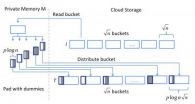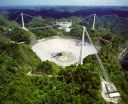(Press-News.org) Diluted magnetic semiconductors (DMS) have received much attention due to their potential application in spintronics, or the storage and transfer of information by using an electron's spin state, its magnetic moment and its charge.
In typical systems based on III-V semiconductors, such as (Ga,Mn)As, (In,Mn)As or (Ga,Mn)N, substitution of divalent Mn atoms into trivalent Ga (or In) sites leads to severely limited chemical solubility, resulting in metastable specimens only available as epitaxial thin films. The hetero-valence substitution, which simultaneously dopes both charges and spin, makes it difficult to individually control each quantum freedom.
Recently a group led by Professor Changqing Jin at the Institute of Physics, part of the Chinese Academy of Sciences, in Beijing, collaborated with scholar Y.J. Uemura at Columbia University in the discovery of a new DMS of bulk Li(Zn,Mn)As (termed "111" following the chemical compositions ration), where isovalent (Zn,Mn) spin doping was separated from charge control via Li concentrations, showing a Curie temperature up to Tc = 50K (Z. Den et al. Nature Communications 2, 422 (2011)).
Compared with classical diluted magnetic semiconductors such as (Ga,Mn)As, the lower Tc of the new "111" system is an obstacle for possible application.
More recently, a new ferromagnetic DMS (Ba,K)(Zn,Mn)2As2 (named "122" type following the chemical ration) system sharing the same structure with "122" type iron pnictide superconductors was reported. Via (Ba,K) substitution to dope hole carriers and (Zn,Mn) substitution to supply magnetic moments, the systems with 5-15% Mn doping exhibit ferromagnetic order with Tc up to 180 K (K. Zhao et al. NATURE COMMUNICATIONS |4: 1442 (2013)). The ferromagnetic order, developing in the entire volume as indicated by SR results, is evidenced by the anomalous Hall effect in the ferromagnetic states.
One of the challenges to possible application for DMS is approaching Tc near room temperature. Given the fact that the Curie temperature of (Ga,Mn)As could be highly enhanced through increasing carrier density by low temperature annealing, optimizing synthesis condition may also pave the way toward further improving Tc in the (Ba,K)(Zn,Mn)2As2 system as well. To avoid the volatility of K at high temperature, and to increase K contents in the sample and consequently increase carrier density, the mixture was heated under 650°C for 60h, a hundred degrees lower than the boiling temperature of the element potassium. This enhanced ferromagnetism with Tc at 230 K in (Ba0.7K0.3)(Zn0.85Mn0.15)2As2 DMS, which is higher than the record Tc of 200 K for (Ga,Mn)As.
The (Ba0.7K0.3)(Zn0.85Mn0.15)2As2 DMS shows spontaneous magnetization following T3/2 dependence expected for a homogeneous ferromagnet with saturation moment 1.0μB for each Mn atom.
As indicated, the carrier mediated and RKKY like interaction induced ferromagnetism could also be observed in insulating samples close to the metal-insulator transition. The resistivity curve of (Ba0.7K0.3)(Zn0.85Mn0.15)2As2, similar to that of (Ga,Mn)N, exhibits a small increase at low temperatures, due presumably to spin scattering of carriers caused by Mn dopants. Clear signature of the ferromagnetic order is evidenced by the obvious negative magnetoresistance below Tc, which is greatly enhanced during decreasing temperature. At T=10K, an obvious hysteresis is observed in the magnetoresistance curve, showing a consistent coercive force in the M(H) curve.
In the present "122'' DMS ferromagnet (Ba0.7K0.3)(Zn0.85Mn0.15)2As2, semiconducting BaZn2As2, antiferromagnetic BaMn2As2, and superconducting (Ba,K)Fe2As2 all share the same crystal structure, with quite good lattice matching in the a-b plane (mismatch≤3%). These could provide distinct advantages in attempts to generate new functional devices based on junctions of various combinations of the aforementioned DMS, superconductor, and magnetic states.
INFORMATION:
"The new DMS with decoupled spin charge doping mechanism would be promising to develop brand new spintronics," report scientists Kan Zhao, Bijuan Chen, Guoqiang Zhao, Zhen Yuan, Qingqing Liu, Zheng Deng, Jinlong Zhu and Changqing Jin, all of the Institute of Physics in Beijing, in an article titled "Ferromagnetism at 230 K in (Ba0.7K0.3)(Zn0.85Mn0.15)2As2 diluted magnetic semiconductor," published in the Chinese Science Bulletin.
This work received funding from the National Natural Science Foundation of China and the Ministry of Science and Technology of China.
See the article:
Kan Zhao, Bijuan Chen, Guoqiang Zhao, Zhen Yuan, Qingqing Liu, Zheng Deng, Jinlong Zhu, Changqing Jin, "Ferromagnetism at 230 K in (Ba0.7K0.3)(Zn0.85Mn0.15)2As2 diluted magnetic semiconductor," Chin. Sci. Bull. (2014) 59(21):2524–2527.
This article was published online in the Chinese Science Bulletin by Science China Press and Springer-Verlag Berlin Heidelberg.
Science China Press is a leading publisher of scientific journals in China, and operates under the auspices of the Chinese Academy of Sciences. Science China Press presents to the world leading-edge advancements made by Chinese scientists across a spectrum of fields.
http://www.scichina.com/
Ferromagnetism at 230 K found in a new diluted magnetic semiconductor by Chinese physicists
2014-07-10
ELSE PRESS RELEASES FROM THIS DATE:
Scientists discover clues why weight-loss surgery cures diabetes
2014-07-10
Scientists at The University of Manchester are a step closer to understanding why diabetes is cured in the majority of patients that undergo gastric bypass surgery.
The research, published in the journal Endocrinology, shows the cure is likely to be explained by the actions of specialised cells in the intestine that secrete a cocktail of powerful hormones when we eat.
During the research, the team showed that gut hormone cells previously thought to contain just one hormone, had up to six hormones including the hunger hormone ghrelin.
Study team leader, Dr Craig ...
Straits of Mackinac 'worst possible place' for a Great Lakes oil spill
2014-07-10
ANN ARBOR – Because the strong currents in the Straits of Mackinac reverse direction every few days, a rupture of the oil pipeline beneath the channel would quickly contaminate shorelines miles away in both lakes Michigan and Huron, according to a new University of Michigan study commissioned by the National Wildlife Federation.
In one scenario examined in the study and accompanying animations, oil from a hypothetical pipeline break reached Mackinac Island and Round Island after 12 hours and Bois Blanc Island after two days. All three islands are in westernmost Lake Huron, ...
New drug active against most aggressive type of lung cancer cells
2014-07-10
Manchester scientists have shown that a new drug could prove useful in treating small cell lung cancer - the most aggressive form of lung cancer.
Scientists from the Cancer Research UK Manchester Institute, based at The University of Manchester and part of the Manchester Cancer Research Centre, teamed up with experts at AstraZeneca, as part of a collaboration agreed in 2010, to test a drug – known as AZD3965 - on small cell lung cancer cells.
The research, published in the journal Clinical Cancer Research, also helps identify which patients are most likely to respond ...
New therapeutic combination to slow resistant sarcomas
2014-07-10
Researchers at sarcomas research group at the Bellvitge Biomedical Research Institute (IDIBELL) and the Catalan Institute of Oncology (ICO) have been tested in 19 patients a new therapeutic combination to combat resistant sarcomas. The clinical trial results, which indicate that the new treatment could stabilize the growth of these tumors have been published this week in the British Journal of Cancer.
Sarcomas
Sarcomas are a rare type of tumor and complex since there are several subtypes. It can affect from children to older ages. It is usually diagnosed in advanced and ...
'Melbourne Shuffle' secures data in the cloud
2014-07-10
PROVIDENCE, R.I. [Brown University] — To keep data safe in the cloud, a group of computer scientists suggests doing the Melbourne Shuffle.
That may sound like a dance move (and it is), but it's also a computer algorithm developed by researchers at Brown University.
The computing version of the Melbourne Shuffle aims to hide patterns that may emerge as users access data on cloud servers. Patterns of access could provide important information about a dataset — information that users don't necessarily want others to know — even if the data files themselves are encrypted.
"Encrypting ...
The bigger the better: Cigarette warning labels prompt quit attempts
2014-07-10
WASHINGTON - Cigarette warning labels can influence a smoker to try to quit even when the smoker is trying to avoid seeing the labels, according to a survey of thousands of adult smokers in four countries published by the American Psychological Association.
Small, text-only warning labels like those on cigarette packs in the United States prompt people to think about health risks of smoking, and people who notice the warnings regularly are more likely to try to quit, the research found. Larger, more graphic warning labels like those in other countries, such as Australia, ...
Radio-burst discovery deepens astrophysics mystery
2014-07-10
The discovery of a split-second burst of radio waves by scientists using the Arecibo radio telescope in Puerto Rico provides important new evidence of mysterious pulses that appear to come from deep in outer space.
The finding by an international team of astronomers, published July 10 in The Astrophysical Journal, marks the first time that a so-called "fast radio burst" has been detected using an instrument other than the Parkes radio telescope in Australia. Scientists using the Parkes Observatory have recorded a handful of such events, but the lack of any similar findings ...
Working to loosen the grip of severe mental illness
2014-07-10
A neuroscientist at Rutgers University-Newark says the human brain operates much the same whether active or at rest – a finding that could provide a better understanding of schizophrenia, bipolar disorder and other serious mental health conditions that afflict an estimated 13.6 million Americans.
In newly published research in the journal Neuron, Michael Cole, an assistant professor at the Center for Molecular and Behavioral Neuroscience, determined that the underlying brain architecture of a person at rest is basically the same as that of a person performing a variety ...
How antioxidants can accelerate cancers, and why they don't protect against them
2014-07-10
Cold Spring Harbor, NY – For decades, health-conscious people around the globe have taken antioxidant supplements and eaten foods rich in antioxidants, figuring this was one of the paths to good health and a long life.
Yet clinical trials of antioxidant supplements have repeatedly dashed the hopes of consumers who take them hoping to reduce their cancer risk. Virtually all such trials have failed to show any protective effect against cancer. In fact, in several trials antioxidant supplementation has been linked with increased rates of certain cancers. In one trial, ...
Depressed men with prostate cancer are diagnosed later stage, get less effective therapies
2014-07-10
Depressed men with localized prostate cancer were more likely to be diagnosed with more aggressive prostate cancer, received less effective treatments and survived for shorter times than prostate cancer patients who were not depressed, a UCLA study has found.
The negative outcomes may be the result of several factors such as bias against the mentally ill, depression's impact on biological cancer processes, the depressed man's lack of investment in his general health and disinterest in receiving more effective care, and missed opportunities by physicians to educate patients ...





